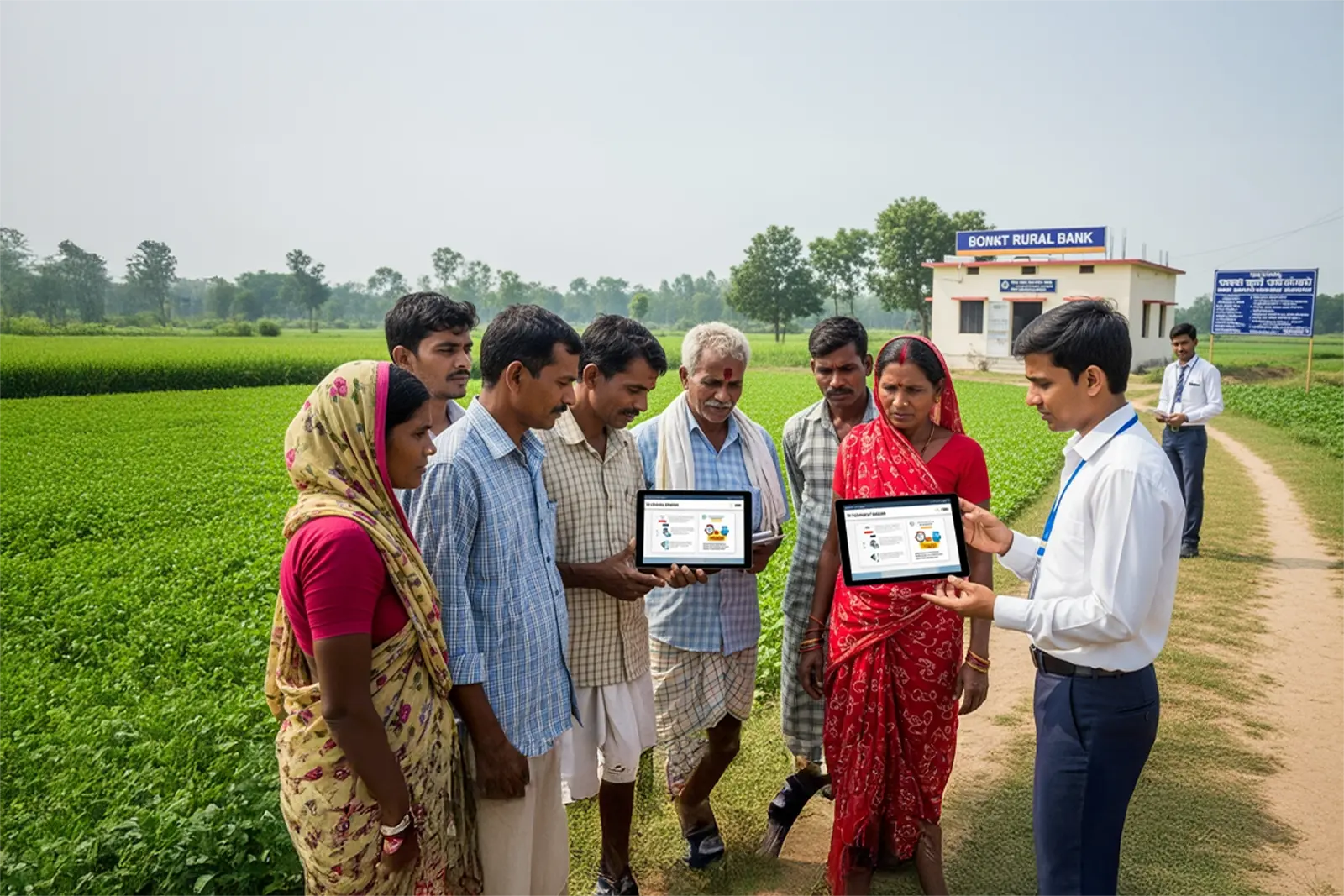One of the challenges faced by smallholder farmers is the lack of adequate financial assistance, especially in developing and underdeveloped countries. They need financial assistance to increase farm productivity, procure quality seeds and agri-input resources, gain access to the market, etc.
Despite being central to the global food system, smallholder farmers have little or no access to formal credit. This has deprived them of investing in technologies and inputs to increase crop yield. Only 4.7% of adults in rural areas in developing countries globally have a loan from a formal financial institution, and only 5.9% have a bank account, according to Findex data.
Smallholder farmers have problems accessing credit due to a lack of basic information, difficulty in procuring small loans, absence of financial footprint, etc. At the same time, financial institutions are also plagued with myriad challenges such as farmers’ risk-averse behavior, systemic risks, information asymmetry, etc., that are critical to the proper functioning of the rural credit market.
Need for digital innovations in agri-lending
Loan disbursal, monitoring, and recovery
Lack of systematic documentation of loan application, complex loan disbursement process, absence of rejection details, manual collection of data, lack of customized solutions, etc., plague microfinance institutions. Intelligent agriculture cloud provides comprehensive farm-level intelligence, access to data- and AI-enabled algorithms that speed-up decision-making. Further, agri-lenders are plagued with high default rates. Digitization provides proactive monitoring throughout the season at one’s desk. Data-driven intelligence predicts risk, extends actionable risk-triggers, and reduces non-performing assets (NPAs).
Meeting PSL quota
The priority sector refers to those that are significant for the development of the basic needs of the country. In many countries, the agricultural sector is a priority sector and banks have Priority Sector Lending (PSL) mandates. For example, the Government of India has directed all banks to set aside 40% of their overall credit to the priority sector, of which 18% is exclusively for agriculture. Regional rural banking services and small finance banks need to attain 75%. Considering the unmet need, it must be easy for banks to meet this mandate. But this is not a reality because of opaque financials, lesser collateral, loan origination and underwriting process, etc. The intelligent agriculture cloud platform provides accurate and data-driven farmer credit scores using automation, data analytics, and digitalization. The cloud also provides intelligent and real-time data pertaining to dynamic parameters such as crop dynamics, harvest timelines, farmer income, etc.
NPA management and risk mitigation
To reduce non-performing assets (NPA), better management of loan repayments is essential. Creating awareness through farmer engagement about repayment benefits, regular communication with borrowers, sending notices to them, etc., helps reduce NPAs. The banks need to monitor whether the credit fund is utilized for the right purpose. Digital agriculture platforms offer on-field visual intelligence to ensure verifiability of credit usage. It enables loan monitoring within season yield and income estimates, harvest window prediction, changes in cropping pattern and insights on crop health, historical data and weather and disease alerts, and provide triggers for timely action for recovery.
Preventing crop losses
Agricultural productivity largely depends on environmental factors such as monsoons, climate, soil, etc. Crop loss due to environmental factors leads to bad loans, which is why many lenders stay away from the agricultural sector. Actionable insights extended by the intelligent agriculture cloud platform help protect crop quality and quantity and mitigate losses. The AI/ML models developed use field data to extend alerts about pests and diseases and impending weather.
Fraudulent claims
Any lender will need accurate information before lending – a significant hurdle that Agri-lenders face. Verifying the land, monitoring farming activities, identifying crops, issuing natural calamity updates, checking whether the land belongs to the farmer, etc., are some challenges for Agri-lenders that can be addressed by digitization. Digital innovation can enable underwriting by assessing credit fraud and other risks. It provides farm-level intelligence, an Agri-worthiness report of farmers that includes real-time yield and risk estimation that can help mitigate adverse selection and fraud.
Market linkage
In agriculture, market linkage provides assurance to Agri-lenders. The lack of confirmed purchase orders from buyers makes it difficult for Agri-lenders to process loans. Insights into farmer productivity, sales, and the market are non-existent. Digitalization of agriculture enables farmers with real-time market linkages (such as prices) and connectivity to wholesale markets, which reduces risk for Agri-lenders.
Farmer and farmer income insights
Farmers’ credentials and income insights are basic information that allows agri-lenders to evaluate their creditworthiness while approving loans like crop loans, farm credit, etc. Finding this basic information has been challenging due to a lack of digital footprint and proper documentation. This information asymmetry is addressed by plot-level understanding of agri-performance enabled by digitalization. Agri-lenders can gain from data on farm and farmer agri-worthiness, cropping pattern for the past six seasons, and yield estimates, before sanctioning loans. Efficiency is further enhanced with regular remote monitoring of crop health and field activities.
Farm digitalization
Deploying technology in agriculture to bridge the gap
Digitalization across the value chain
In Kenya, smallholder farmers struggled to access agricultural financing. Kenya Union of Savings and Credit Cooperatives partnered with Cropin and tapped mobile services to support the unbanked. Cropin’s farm digitalization benefited around 1200 smallholder farmers. It created farmer visibility, which enabled seamless loan disbursal and helped manage the timely recovery of loans and delinquencies








